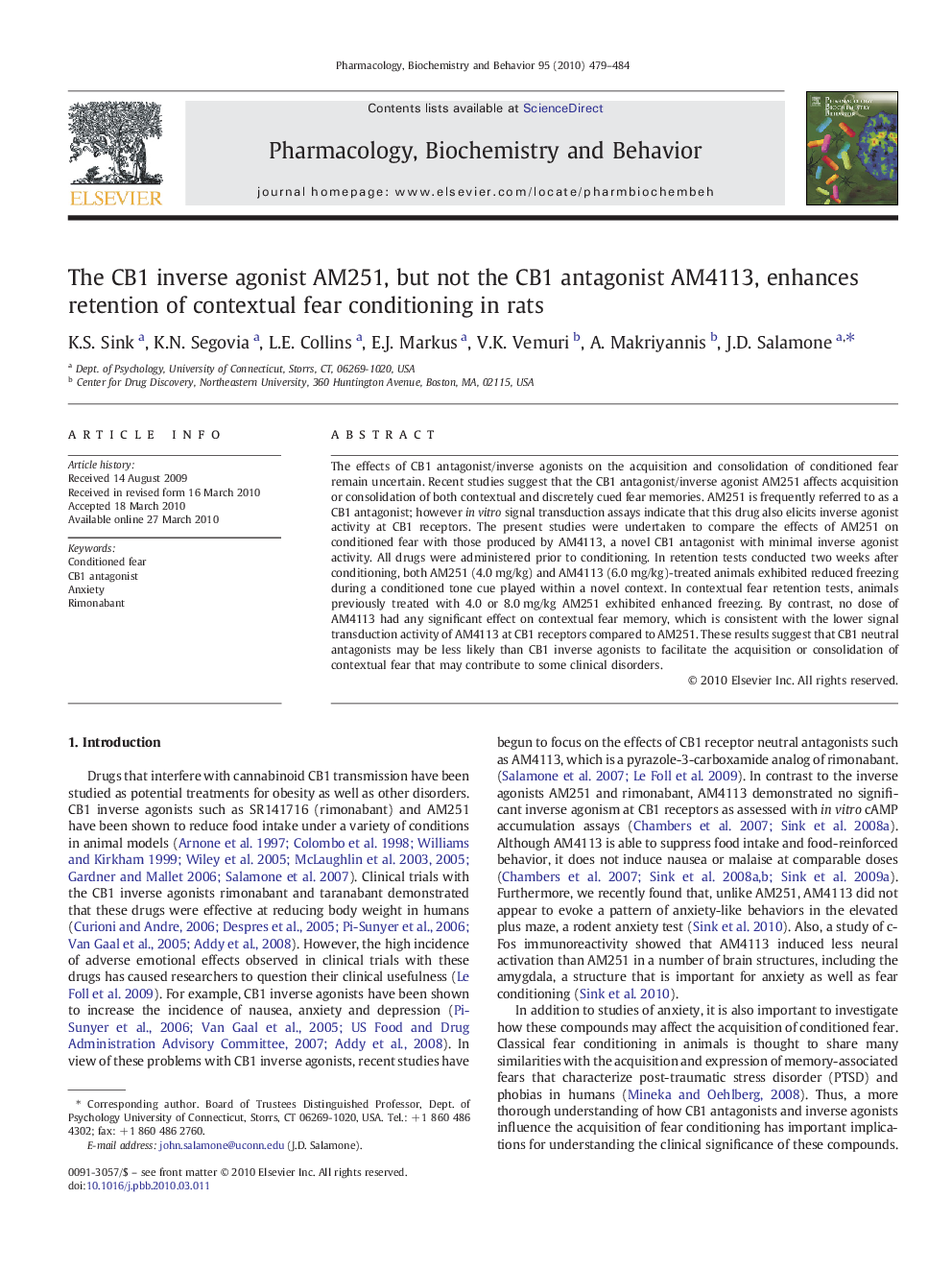| Article ID | Journal | Published Year | Pages | File Type |
|---|---|---|---|---|
| 2013137 | Pharmacology Biochemistry and Behavior | 2010 | 6 Pages |
The effects of CB1 antagonist/inverse agonists on the acquisition and consolidation of conditioned fear remain uncertain. Recent studies suggest that the CB1 antagonist/inverse agonist AM251 affects acquisition or consolidation of both contextual and discretely cued fear memories. AM251 is frequently referred to as a CB1 antagonist; however in vitro signal transduction assays indicate that this drug also elicits inverse agonist activity at CB1 receptors. The present studies were undertaken to compare the effects of AM251 on conditioned fear with those produced by AM4113, a novel CB1 antagonist with minimal inverse agonist activity. All drugs were administered prior to conditioning. In retention tests conducted two weeks after conditioning, both AM251 (4.0 mg/kg) and AM4113 (6.0 mg/kg)-treated animals exhibited reduced freezing during a conditioned tone cue played within a novel context. In contextual fear retention tests, animals previously treated with 4.0 or 8.0 mg/kg AM251 exhibited enhanced freezing. By contrast, no dose of AM4113 had any significant effect on contextual fear memory, which is consistent with the lower signal transduction activity of AM4113 at CB1 receptors compared to AM251. These results suggest that CB1 neutral antagonists may be less likely than CB1 inverse agonists to facilitate the acquisition or consolidation of contextual fear that may contribute to some clinical disorders.
